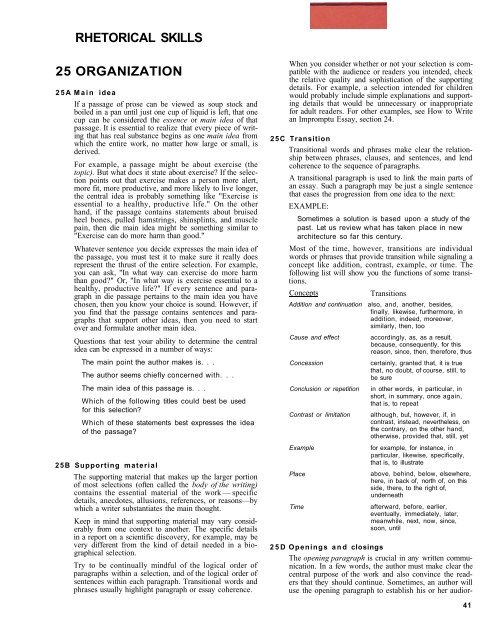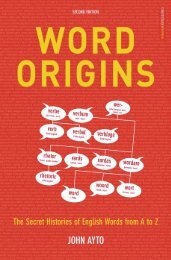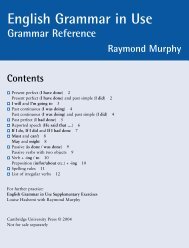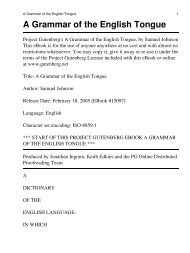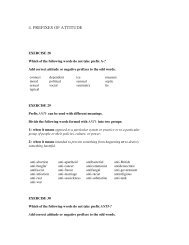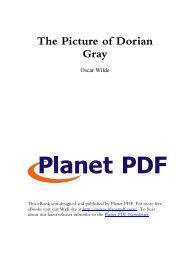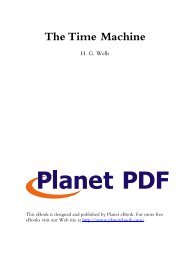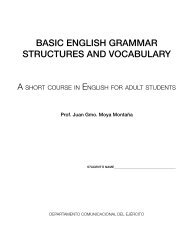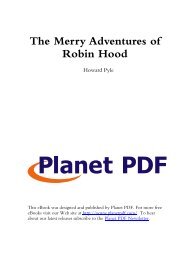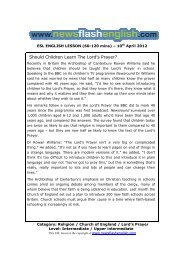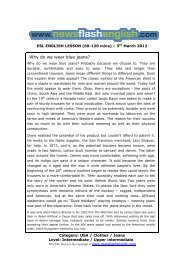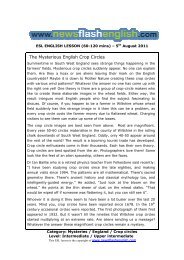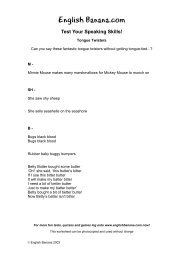TO DOWNLOAD - 75 Pages (928kb - PDF format) - ESL Teachers ...
TO DOWNLOAD - 75 Pages (928kb - PDF format) - ESL Teachers ...
TO DOWNLOAD - 75 Pages (928kb - PDF format) - ESL Teachers ...
You also want an ePaper? Increase the reach of your titles
YUMPU automatically turns print PDFs into web optimized ePapers that Google loves.
RHE<strong>TO</strong>RICAL SKILLS25 ORGANIZATION25A Main ideaIf a passage of prose can be viewed as soup stock andboiled in a pan until just one cup of liquid is left, that onecup can be considered the essence or main idea of thatpassage. It is essential to realize that every piece of writingthat has real substance begins as one main idea fromwhich the entire work, no matter how large or small, isderived.For example, a passage might be about exercise (thetopic). But what docs it state about exercise? If the selectionpoints out that exercise makes a person more alert,more fit, more productive, and more likely to live longer,the central idea is probably something like "Exercise isessential to a healthy, productive life." On the otherhand, if the passage contains statements about bruisedheel bones, pulled hamstrings, shinsplints, and musclepain, then die main idea might be something similar to"Exercise can do more harm than good."Whatever sentence you decide expresses the main idea ofthe passage, you must test it to make sure it really doesrepresent the thrust of the entire selection. For example,you can ask, "In what way can exercise do more harmthan good?" Or, "In what way is exercise essential to ahealthy, productive life?" If every sentence and paragraphin die passage pertains to the main idea you havechosen, then you know your choice is sound. However, ifyou find that the passage contains sentences and paragraphsthat support other ideas, then you need to startover and formulate another main idea.Questions that test your ability to determine the centralidea can be expressed in a number of ways:The main point the author makes is. . .The author seems chiefly concerned with. . .The main idea of this passage is. . .Which of the following titles could best be usedfor this selection?Which of these statements best expresses the ideaof the passage?25B Supporting materialThe supporting material that makes up the larger portionof most selections (often called the body of the writing)contains the essential material of the work — specificdetails, anecdotes, allusions, references, or reasons—bywhich a writer substantiates the main thought.Keep in mind that supporting material may vary considerablyfrom one context to another. The specific detailsin a report on a scientific discovery, for example, may bevery different from the kind of detail needed in a biographicalselection.Try to be continually mindful of the logical order ofparagraphs within a selection, and of the logical order ofsentences within each paragraph. Transitional words andphrases usually highlight paragraph or essay coherence.When you consider whether or not your selection is compatiblewith the audience or readers you intended, checkthe relative quality and sophistication of the supportingdetails. For example, a selection intended for childrenwould probably include simple explanations and supportingdetails that would be unnecessary or inappropriatefor adult readers. For other examples, see How to Writean Impromptu Essay, section 24.25C TransitionTransitional words and phrases make clear the relationshipbetween phrases, clauses, and sentences, and lendcoherence to the sequence of paragraphs.A transitional paragraph is used to link the main parts ofan essay. Such a paragraph may be just a single sentencethat eases the progression from one idea to the next:EXAMPLE:Sometimes a solution is based upon a study of thepast. Let us review what has taken place in newarchitecture so far this century.Most of the time, however, transitions are individualwords or phrases that provide transition while signaling aconcept like addition, contrast, example, or time. Thefollowing list will show you the functions of some transitions.ConceptsTransitionsAddition and continuation also, and, another, besides,finally, likewise, furthermore, inaddition, indeed, moreover,similarly, then, tooCause and effectConcessionConclusion or repetitionContrast or limitationExamplePlaceTimeaccordingly, as, as a result,because, consequently, for thisreason, since, then, therefore, thuscertainly, granted that, it is truethat, no doubt, of course, still, tobe surein other words, in particular, inshort, in summary, once again,that is, to repeatalthough, but, however, if, incontrast, instead, nevertheless, onthe contrary, on the other hand,otherwise, provided that, still, yetfor example, for instance, inparticular, likewise, specifically,that is, to illustrateabove, behind, below, elsewhere,here, in back of, north of, on thisside, there, to the right of,underneathafterward, before, earlier,eventually, immediately, later,meanwhile, next, now, since,soon, until25D Openings and closingsThe opening paragraph is crucial in any written communication.In a few words, the author must make clear thecentral purpose of the work and also convince the readersthat they should continue. Sometimes, an author willuse the opening paragraph to establish his or her audior-41


